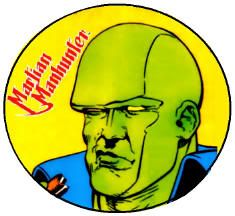The Golden Rule: Popularized in various forms throughout the world, including ancient Babylon, Egypt, Greece, and amongst the followers of Buddhism, Confucianism, Hinduism, Taoism, and more. One of the most basic ethical tenants in any society.
Pre-and-Post Common Era (A.D.): Hillel the Elder taught the Jewish people the virtues of cleanliness, brotherly love, honesty, charity, humility, patience and a gentle demeanor. Most importantly, he explained "What is hateful to you, do not do to your fellow: this is the whole Torah; the rest is the explanation; go and learn" Jesus Christ extended this teaching to the gentiles, with "Thou shalt love thy neighbour as thyself" and the story of the Good Samaritan. Marcus, the Golden Gladiator, active in Rome.

3rd - 4th Century: In the Roman Empire, several wealthy matrons converted to Christianity and established houses to care for the ill and destitute through a unisex staff. Under the influence of St. Jerome, Saint Fabiola was among their number. The Deaconess groups were suppressed by Western churches in the Middle Ages, but would resurface occasionally over the centuries.
1095-1272: Orders of crusader knights aided wounded comrades in battle, and built hospitals which established health administration standards throughout Europe. Among them were the Teutonic Knights and the Knights of St. John of Jerusalem, also known as the Knights Hospitaller. The Knights of St. Lazarus were dedicated to caring for syphilitics, lepers, and those with chronic skin conditions. The Sacred Order of Saint Dumas were not so charitable, and broke with the Knights Templar before their dissolution and absorption into the Knights Hospitaller.
1633: The Daughters of Charity of Saint Vincent de Paul founded by St. Louise de Marillac and its namesake. Among those in their care are victims of The Blood Red Moon, a group of vampires led by Mary Seward.

1645: First North American hospital founded in Montreal by Jeanne Mance.
Mid-to-Late 18th Century: Rabia Choraya, the highest paid and most respected woman in the Moroccan Army, served as head nurse during the French & Indian War.
James Derham was born into slavery and owned by several doctors. One, Dr. Robert Love, encouraged Derham to practice medicine.
Bess Lynn acted as a traveling frontier nurse who privately seethed against the British. Fearing reprisal against her family, Lynn assumed the costumed identity of Miss Liberty to fight a patriotic battle for the United States in the American Revolutionary War. Miss Liberty was occasionally joined by Tomahawk and Dan Hunter, who found her body crushed under the Liberty Bell during a battle with Hessian troops.
1783: James Derham bought his freedom from money earned as a nurse. While still in his twenties, he opened a successful medical practice. Derham is recognized as the first African-American to formally practice medicine in the U.S., although he lacked any degrees. An expert in throat diseases and the relationship between climate and illness, Derham mysteriously disappeared in 1802, leaving behind no family.

Early-To-Mid 19th: Effective tribal nursing saved Lazarus Lane after his being struck by lightning, although the trauma led to his becoming the masked vigilante El Diablo. Improper tribal nursing contributed to Jonah Hex's face.
1836: Theodore Fliedner reinstituted the Order of Deaconesses through a small German hospital, where Florence Nightingale would eventual receive training.
1854: Soldiers in the Crimean War suffered such inadequate medical care that it caused a public outcry in Great Britain. Florence Nightingale was asked to help with the problem, and with her female nursing staff, affected miraculous change. Through the use of sanitary practices, Nightingale managed to reduce mortality rates in some areas by as much as 40%. "The Lady with the Lamp" offered continuous care, checking on her charges through the night. Nightingale was the first nurse to wield enough political influence to pressure a government, and championed an institutional commitment to documentation and precaution against the spread of infectious disease. Nightingale literally wrote the book for early nursing theory, and used a £4500 honorarium from the British people to develop the Nightingale Training School for Nurses in 1860.

1861–1865: Escaped slave and "Underground Railroad" conductor Harriet Tubman worked for the Union Army as a cook, nurse, armed scout and spy. Sojourner Truth also provided care to fugitive slaves.
"Mother" Mary Ann Bickerdyke served as chief of nursing under Union General Ulysses S. Grant. Outspoken and determined, no authority could come between her and the best care for her boys. Mother Bickerdyke was revered by all, setting up many hospitals and helping sort out veterans issues after the war.
Clara Barton established an agency to obtain and distribute medical supplies to Union soldiers, and was heavily involved in the treatment of their casualties during the war. Barton was also placed in charge of finding missing Union soldiers.
Dorothea Dix served as Superintendent of Army Nurses, although her equal care for Confederate soldiers endeared her to few in the North. She would later lobby for the construction of the first American mental institutions.
Sally Louisa Tompkins, a philanthropic nurse, sponsored a hospital to treat Confederate soldiers. Tompkins was commissioned as a captain, and the only woman to serve as a member of the Confederate States Army.
Authors Walt Whitman and Louisa May Alcott both served as nurses for stints.
1873: Linda Richards became the first professionally trained nurse from the United States. Richards introduced nurse's notes, doctor's orders and the practice of nurses wearing uniforms.
1879: Mary Mahoney became the first professionally trained African-American nurse in the United States, and would champion equal opportunities for minorities in the field.
1881: Clara Baron founded the American Red Cross, and served as its first president. The following year, the Geneva Convention allowed links to the International Red Cross and operation in time of peace.
1893: Lillian Wald coined the term "public health nurse" while beginning to care for low income patients. Wald herself lived in the slums to provide better and more immediate care. This grew to include all manner of social work out of the Henry Street Settlement and Visiting Nurse Service.
The Nightingale Pledge was introduced.

1911: Elizabeth Kenny began her earliest work on polio treatment, to which she would devote decades, earning world renown, and elevating the public opinion of nursing.
1915: British nurse Edith Cavell executed by firing squad for aiding in the escape of two-hundred Allied soldiers. Hans Von Hammer wept.
1916: Public health nurse and activist Margaret Higgins Sanger saw publication of the far reaching sexual health pamphlet What Every Girl Should Know. Max Mercury heartily approved of her sneaking diaphragms into the country. The same year, Sanger was imprisoned for thirty days after opening the first birth control information clinic in the U.S.

1920: The 19th Amendment passed, thanks to the help of feminists like nurse Lavinia Dock, who also campaigned in favor of legislation for nurses to be governed by themselves, rather than physicians. Dock co-founded the precursor to the modern National League for Nursing.
1921: American Birth Control League founded by Margaret Higgins Sanger, who would finally open a legal birth control clinic in 1923. Sanger would later be considered the founder of Planned Parenthood.
1925: Pioneer nurse Mary Breckinridge founded the Frontier Nursing Service, and would develop one of the U.S.'s first midwifery schools.
1938: The Nurses Memorial in Arlington National Cemetery was erected in order to honor the fallen caregivers of World War I. The first super-heroes began to appear.
World War II: Lacking enough nurses to care for the large number of casualties, auxiliary care givers like "practical" nurses were called to aid, under the supervision of more fully trained/experienced nurses.
1942: Twenty-one Australian nurses were massacred by the Japanese on Banka Island. Meanwhile, Princess Diana of Paradise Island becomes a nurse.
1951: Vocational Nursing standards established in the United States, creating the LPN/LVN designation. The Justice Society of America disbanded rather than unmask before HUAC.

1965: Introduction of the role of nurse practitioner.
Vietnam War: Of 11,000 American servicewomen station in country, 90% were nurses. Most volunteered straight out of school, and all are honored by the Women's Vietnam Memorial near Washington, D.C.
A bit of peas in the potatoes, but I needed to study, and don't you feel enriched?

















No comments:
Post a Comment